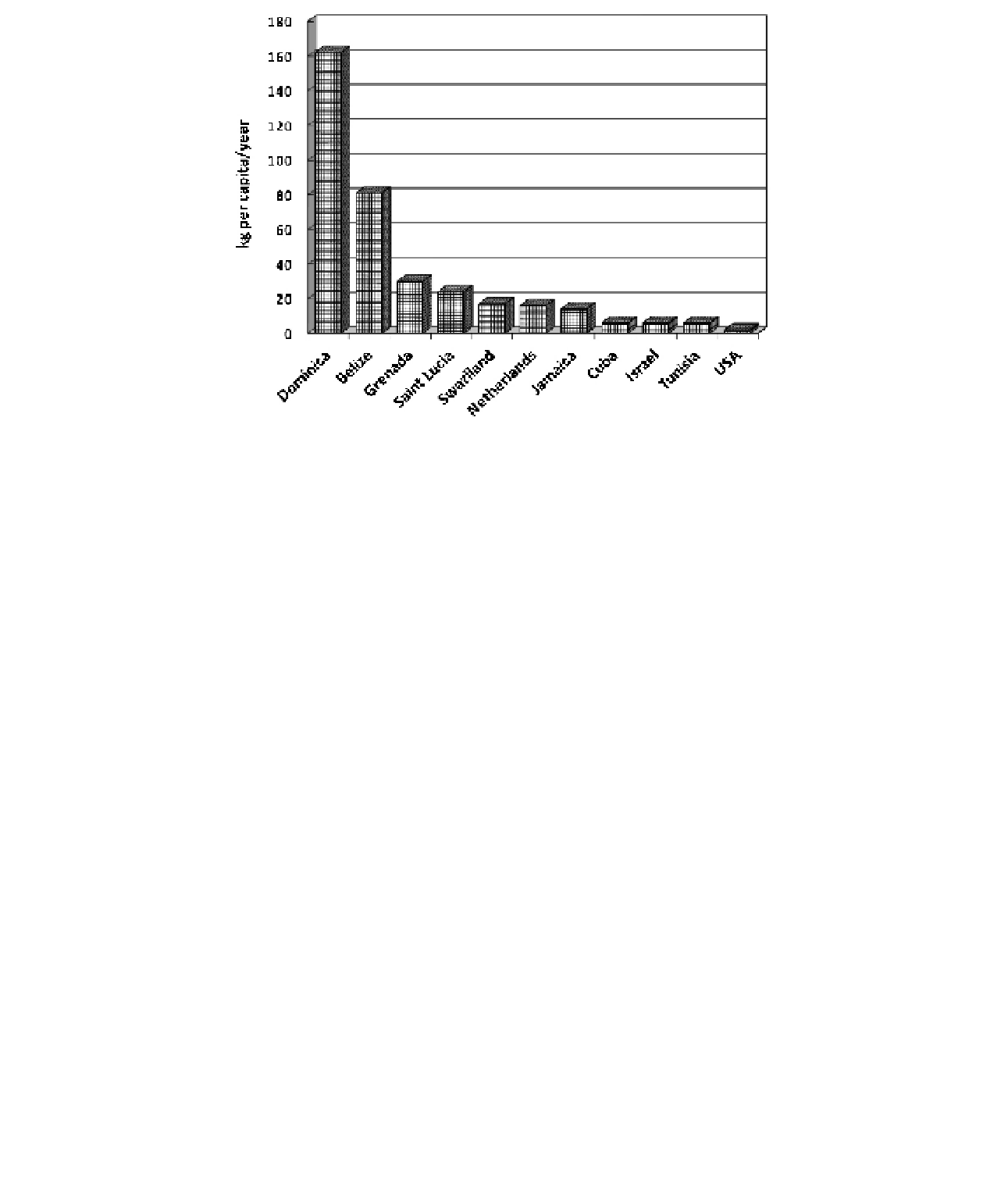Agriculture Reference
In-Depth Information
Figure 19.4.
Top 10 countries by grapefruit consumption (source: Adapted from FAO, 2004).
Physiological disorders and pathology
Postharvest physiology of grapefruit has been reported in
areas such as the influence of applied waxes on pitting
(Petracek et al., 1998), peel pitting at nonchilling temper-
atures as affected by changes from low to high relative
humidity during storage (Alferez and Burns, 2004), the in-
fluence of different postharvest treatments on nutritional
quality of grapefruits (Biolatto et al., 2005), and the effect
of harvest time and storage conditions for short distance
summer consumption (Pailly et al., 2004).
Grapefruit is susceptible to “chilling injury” at low tem-
perature storage, typically
sive degree of water loss (Burns, 2004). Echeverria et al.
(1999) reported another condition, “blossom-end clearing,”
also commonly found in late harvested and thin-peeled
red grapefruit. This condition is characterized by the leak-
ing of juice from the segments to the peel. Remedies to
avoid/reduce blossom-end clearing include lowering fruit
temperatures to under 21
◦
C after harvest and careful han-
dling to avoid high impact damage.
Other postharvest physiological disorders include peel
“pitting” in waxed fruit; “oleocellosis,” which occurs dur-
ing the harvest due to use of excessive pressure or squeez-
ing force to separate fruit from the stem; and “green ring,”
which is characterized by the failure of the peel to degreen
in circular areas around fruit-to-fruit contact points (Burns,
2004).
For fungal pathogen control in postharvest fruit appli-
cation, hot-water dips have been proposed as alternative
approaches to chemical treatments of some fruits, although
thermal degradation of plant tissue (middle lamella pectins)
may occur accompanied by the loss of turgor pressure.
Blanching treatments have been applied to fruits and are
effective in mold control due to the elimination of a favor-
able environment for their growth (Gonzalez and Barrett,
2010).
5
◦
C (Petracek et al., 1995).
The chilling injury is characterized by peel pitting. Sur-
face coatings with high-shine water waxes are effective
in reducing the incidence of chilling injury. Among other
remedies, conditioning of the fruit by intermittent warming
or gradual/stepwise lowering of storage temperature can
also reduce chilling injury (Petracek et al., 1995).
Fruit section drying or “granulation” can affect late-
season grapefruit mainly on the stem end of the segmen; this
condition could be severe in larger size fruit that is stored
for extended periods (Burns and Albrigo, 1998). Adjusting
harvesting time (early harvest) for the large grapefruits can
be helpful in avoiding granulation.
The “stem-end rind breakdown” results from the col-
lapse and sinking of the peel in irregularly shaped regions
closer to the stem end. This condition, which happens in
late-season grapefruit, is closely associated with an exces-
≤
Current storage and shipping practices
The recommended commercial storage conditions of grape-
fruits are a maximum storage and shelf life of 28-42 days

Search WWH ::

Custom Search